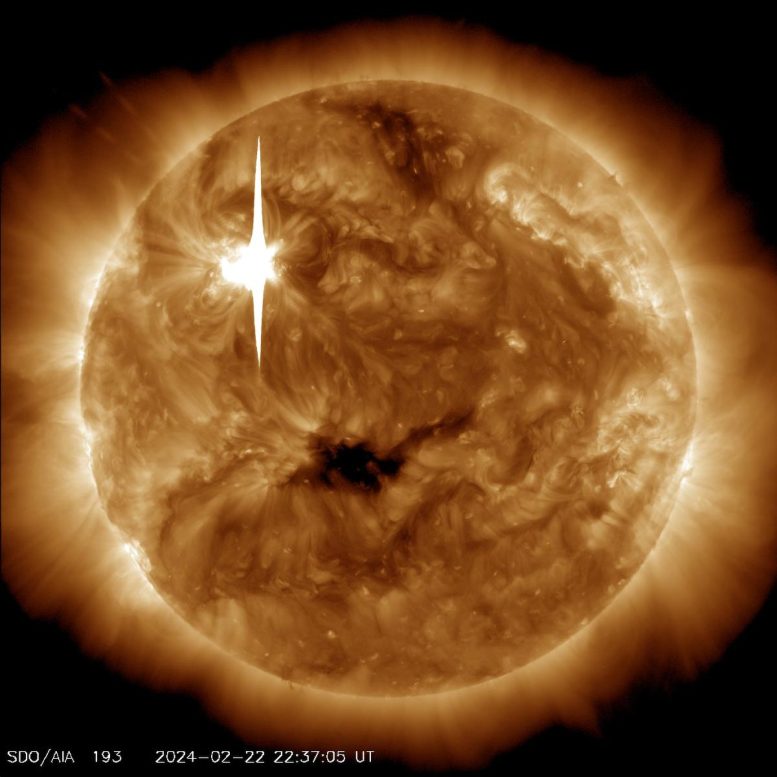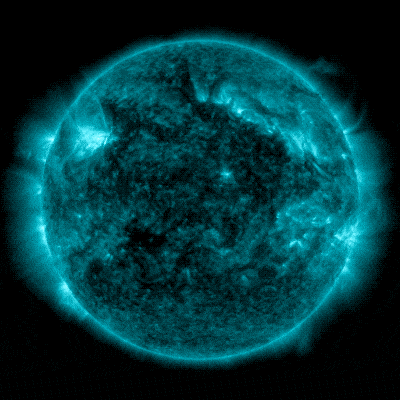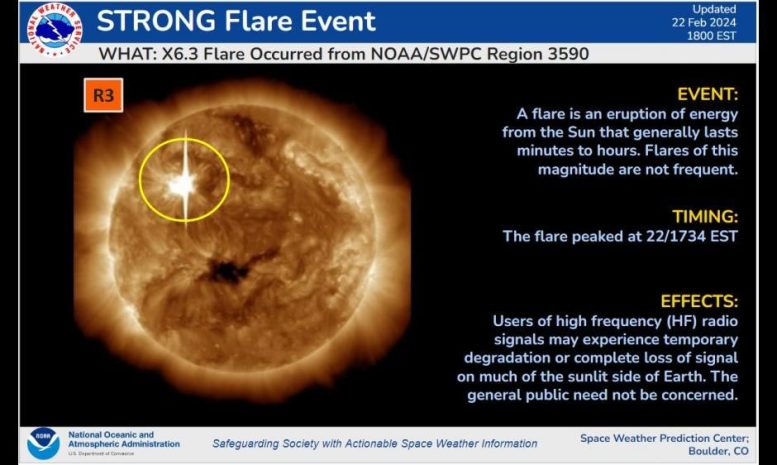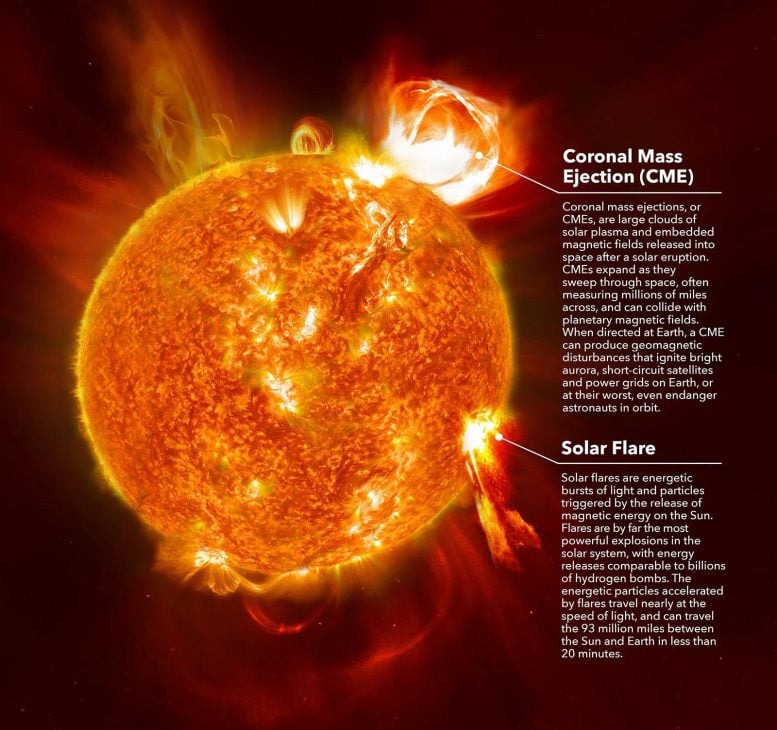
NASA’s Solar Dynamics Observatory captured this image of a solar flare – as seen in the bright flash in the upper left of the Sun – on February 22, 2024. The image shows a subset of extreme ultraviolet light that highlights the extremely hot material in flares and which is colorized in bronze. Credit: NASA/SDO
On February 22, 2024, the Sun emitted an extremely strong solar flare. It reached its peak at 5:34 p.m. EST. NASA’s Solar Dynamics Observatory, which watches the Sun constantly, captured an image of the event.
This particular solar flare has been classified as an X6.3 flare. The “X-class” designation is reserved for the most intense solar flares, with the numerical value offering further detail on its strength. An X6.3 flare represents an extraordinarily potent event. It stands out as the most significant flare observed since an X8.2 flare was recorded on September 10, 2017.

NASA’s Solar Dynamics Observatory captured these images of a solar flare – as seen in the bright flashes in the upper left area of the Sun – on February 21 and 22, 2024. The images show a subset of extreme ultraviolet light that highlights the extremely hot material in flares and which is colorized in teal. Credit: NASA/SDO
That X6.3 flare was the third significant solar flare within 24 hours. Earlier the Sun emitted two strong solar flares, the first one, classified as an X1.8 flare, peaked at 6:07 p.m. EST on February 21, 2024. The second one, classified as an X1.7 flare, peaked at 1:32 a.m. EST on February 22, 2024.

Another X-class flare from Region 3590 peaked at approximately 1734 EST on February 22, 2024. The X6.3 flare was the largest of the three X-class flares that occurred in the past 24 hours, and the strongest of this solar cycle. While impressive, this event still poses no significant threat to the general public. Credit: NOAA
NASA’s Solar Dynamics Observatory
NASA’s Solar Dynamics Observatory (SDO), which captured the images on this page, was launched in February 2010. Its mission is designed to observe the Sun and its solar activities comprehensively. Positioned in a geosynchronous orbit about 22,000 miles above Earth, SDO provides unparalleled insights into solar phenomena, including solar flares, sunspots, and coronal mass ejections (CMEs).
SDO’s primary goal is to understand the Sun’s influence on Earth and near-Earth space by studying the solar atmosphere in many wavelengths simultaneously. It is equipped with a suite of instruments that allow scientists to monitor the Sun’s magnetic field, its surface, and atmospheric activities in high resolution. One of the key instruments, the Atmospheric Imaging Assembly (AIA), captures images of the solar atmosphere in 10 different wavelengths every 12 seconds, providing a dynamic view of the Sun’s behavior. Through its continuous observation, SDO plays a critical role in improving our ability to forecast space weather events that can affect life and technology on Earth.

Coronal mass ejections and solar flares. Credit: NASA’s Goddard Space Flight Center/Mary Pat Hrybyk-Keith
Solar Flares
Solar flares are intense bursts of radiation that originate from the release of magnetic energy on the Sun’s surface. These energetic phenomena can emit light across the entire electromagnetic spectrum — from radio waves to gamma rays. The energy released by a solar flare can be monumental, rivaling billions of megatons of TNT in terms of explosive power.
The classification of solar flares is based on their brightness in X-ray wavelengths, as observed by satellites orbiting Earth. This system categorizes flares into three main classes: C, M, and X. Each class represents a tenfold increase in energy output compared to the preceding one, with C-class flares being the least intense, M-class flares more intense, and X-class flares the most intense.
Within these classes, flares are further ranked by a numerical value from 1 to 9, which indicates their specific strength within their class. However, X-class flares can exceed 9, reflecting their extreme intensity. For instance, an M1 flare is ten times less intense than an X1 flare, highlighting the significant jump in power between these classes. Similarly, an M2 flare is twice as intense as an M1 flare, demonstrating the logarithmic scale within each class.
An X-class flare, such as the X6.3, signifies an extremely powerful solar event, capable of causing significant disturbances in Earth’s atmosphere, affecting communications, navigation systems, and even power grids. The numerical value following the class letter provides a more precise indication of the flare’s intensity, with higher numbers representing stronger flares.
By monitoring and classifying solar flares, scientists can better understand the Sun’s behavior and predict potential impacts on space weather, which is crucial for protecting satellites, astronauts, and technology on Earth. NASA’s Solar Dynamics Observatory and other instruments play a key role in observing these solar activities, enabling timely forecasts and mitigating the effects of space weather on our planet.